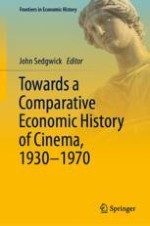2022 | OriginalPaper | Buchkapitel
‘It Seems to Me that the Most Popular Films in the West Are Very Harmful to Us’: Film Popularity in Poland During the years of ‘High Stalinisation’
verfasst von : Konrad Klejsa, John Sedgwick
Erschienen in: Towards a Comparative Economic History of Cinema, 1930–1970
Aktivieren Sie unsere intelligente Suche, um passende Fachinhalte oder Patente zu finden.
Wählen Sie Textabschnitte aus um mit Künstlicher Intelligenz passenden Patente zu finden. powered by
Markieren Sie Textabschnitte, um KI-gestützt weitere passende Inhalte zu finden. powered by
